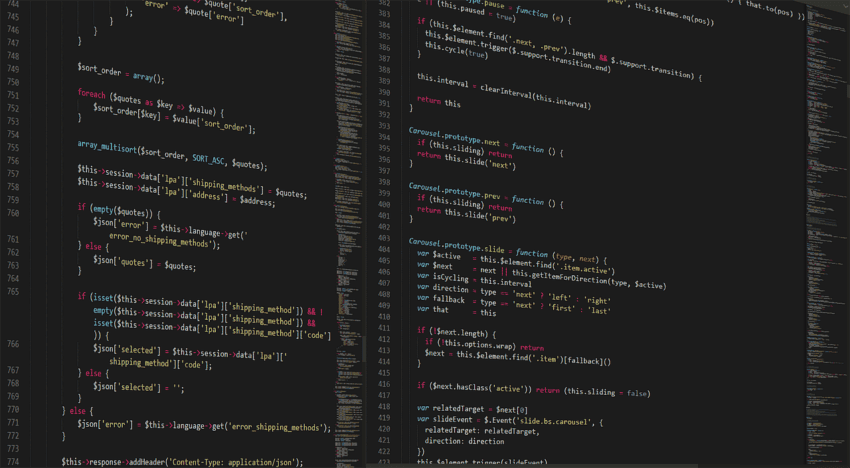Master the Python Programming Language: A Comprehensive Guide
The Python programming language is an incredibly versatile and widely used tool in the world of software development. Whether you’re a beginner looking to start your coding journey or an experienced developer seeking to expand your skill set, Python offers a range of features to enhance productivity and creativity.
What is Python?
Python is a high-level, interpreted, and object-oriented programming language created by Guido van Rossum and released in 1991. Known for its clear syntax and readability, Python has become a favorite among developers across various fields, such as web development, data analysis, artificial intelligence, and more.
Key Characteristics of Python
- High-Level Language: Python abstracts many lower-level details, making it easier to focus on programming logic rather than memory management.
- Interpreted Language: Python runs code line by line, which simplifies the debugging process.
- Cross-Platform Compatibility: Python works across various platforms like Windows, macOS, and Linux.
- Rich Standard Library: It includes extensive libraries to support tasks in web development, data manipulation, machine learning, and more.
Why Learn Python?
Here are some compelling reasons to dive into learning the Python programming language:
- Easy to Learn: Python’s syntax closely resembles English, making it accessible for beginners.
- Vast Community Support: Python has a large, active community with numerous resources available for learning and troubleshooting.
- Versatile Applications: From web development with frameworks like Django to data analysis using pandas, Python can do it all.
- Great Libraries: Libraries such as NumPy, TensorFlow, and Flask facilitate advanced functionalities in various domains.
Real-World Applications of Python
1. Data Analytics and Visualization
Python is extensively used in data analytics. Libraries like NumPy and pandas empower users to manipulate datasets and derive insights, while visualization libraries such as matplotlib and seaborn help in graphical representation.
2. Web Development
Web frameworks such as Django and Flask allow developers to build robust and scalable web applications efficiently. You can learn more about how to build dynamic websites using Python in our guide on Master Python Web Development.
3. Machine Learning and AI
Python is a popular language for AI and machine learning projects, primarily due to libraries like TensorFlow and scikit-learn that simplify model building and training processes.
Tips for Learning Python
- Start with the Basics: Familiarize yourself with basic syntax and data types.
- Utilize Online Resources: Websites like Codecademy and Coursera offer great courses for beginners.
- Practice with Projects: Hands-on projects are essential for reinforcing your learning process.
- Join Python Communities: Engage with communities on platforms like Reddit and Stack Overflow.
- Read Documentation: Utilize the official Python documentation for comprehensive information on language features.
Conclusion
In summary, the Python programming language is your gateway to numerous career opportunities in tech. Its ease of learning, broad application range, and community support make it suitable for everyone, from novice programmers to seasoned developers. By leveraging the resources available and following best practices, you can effectively learn and master Python, paving the way for success in various domains.
Additional Resources
To further enhance your Python skills, consider checking out these articles on our website:
Projects and Applications of the Python Programming Language
Key Projects
- Data Visualization Dashboard: Create a web-based dashboard using Flask and Matplotlib to visualize data trends.
- Web Scraper: Develop a Python script that extracts data from websites using BeautifulSoup and saves it in a CSV file.
- Personal Finance Tracker: Build a console application to track income and expenses using Pandas for data management.
- Machine Learning Model: Create a simple machine learning model using scikit-learn to predict housing prices based on various features.
Python Code Examples
Data Visualization Dashboard
from flask import Flask, render_template
import matplotlib.pyplot as plt
import pandas as pd
app = Flask(__name__)
@app.route('/')
def dashboard():
data = pd.read_csv('data.csv')
plt.plot(data['date'], data['value'])
plt.savefig('static/graph.png')
return render_template('dashboard.html')
if __name__ == '__main__':
app.run(debug=True)
Web Scraper
import requests
from bs4 import BeautifulSoup
import csv
url = 'https://example.com'
response = requests.get(url)
soup = BeautifulSoup(response.text, 'html.parser')
data = []
for item in soup.find_all('h2'):
data.append(item.text)
with open('data.csv', mode='w', newline='') as file:
writer = csv.writer(file)
writer.writerow(['Title'])
writer.writerows([[row] for row in data])
Personal Finance Tracker
import pandas as pd
# Sample data as a dictionary
data = {
'Income': [5000, 6000, 5500],
'Expenses': [2000, 2500, 3000]
}
df = pd.DataFrame(data)
df['Savings'] = df['Income'] - df['Expenses']
print(df)
Machine Learning Model
import pandas as pd
from sklearn.model_selection import train_test_split
from sklearn.linear_model import LinearRegression
# Load dataset
data = pd.read_csv('housing_data.csv')
X = data[['feature1', 'feature2']]
y = data['price']
X_train, X_test, y_train, y_test = train_test_split(X, y, test_size=0.2)
model = LinearRegression()
model.fit(X_train, y_train)
predictions = model.predict(X_test)
print(predictions)
Real-World Applications
The Python programming language has extensive applications across various domains:
- Data Science: Python is the backbone of data analysis and statistical analysis with libraries like NumPy and Pandas.
- Web Development: Developers use Python for backend development in websites and applications, utilizing frameworks like Django and Flask.
- Automation: Python scripts can automate mundane tasks, such as file management and data entry, thus improving productivity.
- Artificial Intelligence: Python’s simplicity and powerful libraries enable rapid development of AI and machine learning algorithms.
Next Steps
Now that you have gained a foundational understanding of the Python programming language, it’s time to dive deeper!
Consider working on beginner-friendly projects that incorporate the principles you’ve learned. This hands-on practice is invaluable in solidifying your skills.
Explore online platforms like W3Schools for interactive tutorials that can help reinforce your understanding.
Additionally, check out our article on Unlock Your Potential – Ultimate Guide to Python Web Development to see how Python can be applied in real-world web applications.
Join Python communities and forums such as Reddit and Stack Overflow where you can share your experiences and seek advice from more experienced developers.
Lastly, don’t forget to consistently refer to the official Python documentation for in-depth information and best practices.
